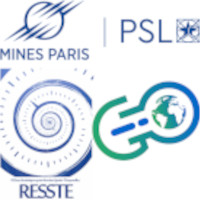Nowadays, knowledge over cereals quality represents a great part of management and contract fulfillment, almost as important as the quantity produced. Thus, having an overview of available grain quality allows cooperatives to prepare more efficient batches and sell their produce at the right price, minimizing losses and wastes.
The aim of this talk is to present a method for forecasting cereals' qualities over a large area.
More precisely, we make use of geographically weighted regression so as to take into account both spatial correlation and correlation between grain quality and the meteorological conditions during growth season. This was also motivated by experts advices indicating that some fields tends to provide better grains than other.
The study was conducted on a spatial domain including the Normandy and Center region (northwestern France), and over the years 2016 to 2022.
Meteorological data were provided by MeteoFrance and consists of minimum, mean and maximum temperature, precipitation and number of days without rain or frost aggregated every two weeks from February to July.
We used ordinary kriging to get an estimate of those on each site.
In this presentation, we will focus on the case of wheat. Wheat data were provided by the agro-port industry specialized in cereal exports
Senalia which supports this study.
Model performance and variable selection were assessed using the percentage of explained variance, the root-mean square error (RMSE) and mean absolute error (MAE) with a by-campaign cross-validation. Indeed, we obtain a mean RMSE (resp. MAE) of 2 (resp. 1.5) kg/hL for the specific weight, 0.7 (resp. 0.5) % for the protein content and 0.8 (resp. 0.7) % for the moisture content. Actors of the domain has confirmed those scores as great. Furthermore, forecast over the test campaign (cereals harvested in 2022) has shown a great representation of spatial discrepancy and quality on each site.
At the end, we discuss how the forecast can be improved by measurements made by Sénalia over the campaign of study by means of data fusion.
- Poster

 PDF version
PDF version

